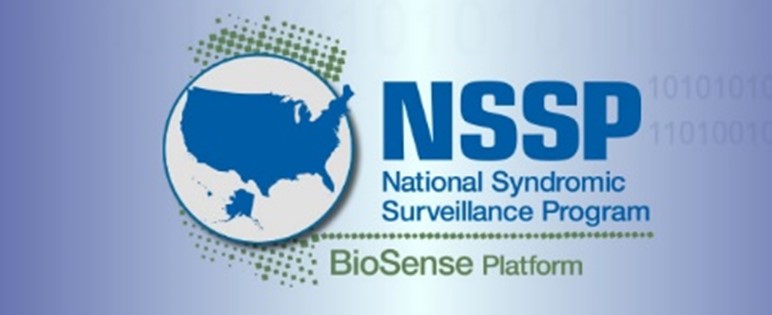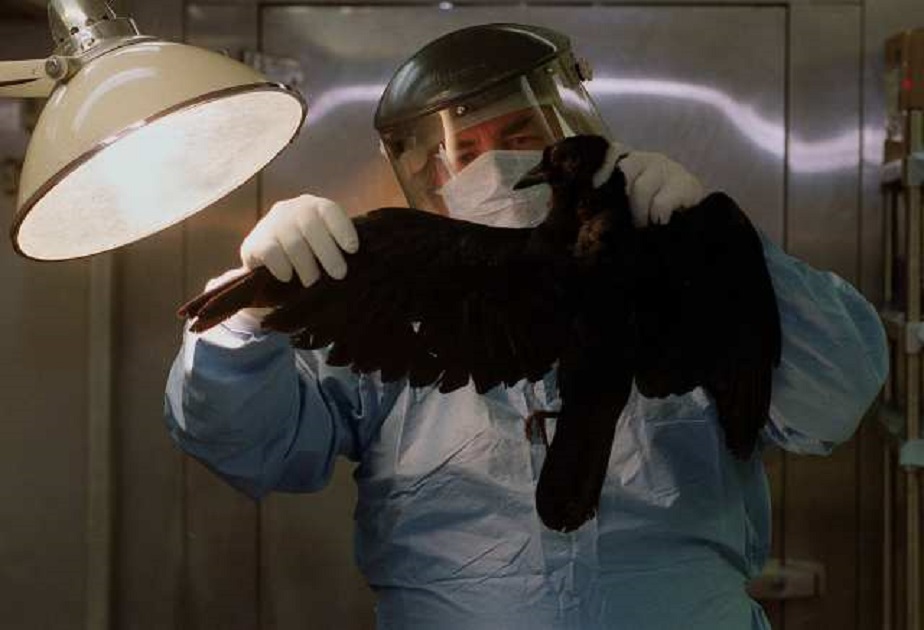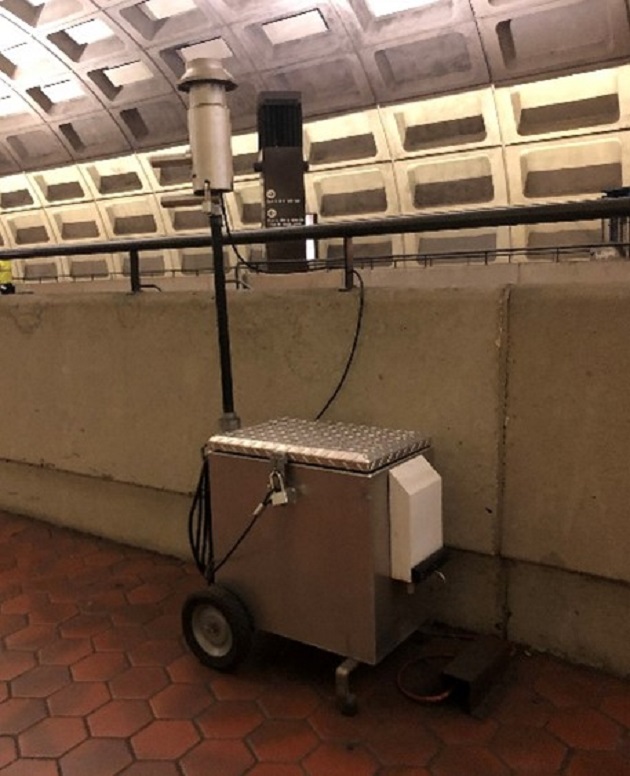Initial detection is an activity essential to limiting the harm caused by the incident and triggering the appropriate response. Many biological agents can take days to cause symptoms, contributing to a delay in incident detection. Similarities of symptoms across pathogens may contribute to delays in detection or initial mischaracterization of an incident, such as detection of emerging diseases or intentional attacks during annual flu season. In some instances, detection may occur only after the outbreak/incident is well underway, resulting in potentially large numbers of infections prior to initial detection. Detection strategies include:
- Passive surveillance is a system by which hospitals, clinics, and/or other sources submit reports to a health department as part of their routine duties. Relatively inexpensive, passive surveillance is used to monitor individuals and populations for signs that a disease outbreak may be occurring. Data may be incomplete, and timeliness of reporting may vary, as passive surveillance depends on individuals in various institutions to submit information.16
- Active surveillance is a system by which health department staff regularly contact healthcare facilities or members of the public to inquire about health conditions. Relatively expensive compared to passive surveillance, active surveillance provides more accurate and timely information.17 Active surveillance also includes systems that are designed to detect biological agents in the environment (generally air or water). They offer quick recognition of a biological incident, but their widespread use faces many technological and practical hurdles. Examples include identification from BioWatch, water system monitoring, wastewater monitoring, etc.
Table 2: Comparing Types of Public Health Surveillance18
| Passive Surveillance | Active Surveillance |
|---|---|
| Diseases are reported by healthcare providers | Health agencies contact health providers, seeking reports |
| Simple and inexpensive | Ensures more complete reporting of conditions |
| Limited by incompleteness of reporting and variability of quality | Used in conjunction with specific epidemiologic investigation |
To best protect the population, a combination of both active and passive detection systems, analysis of human health effects, monitoring signs in the environment and local animal populations, and observing other features of an incident should be employed at the community level, whenever possible. Many surveillance systems are designed to detect an incident following the occurrence of symptoms of disease, and it is possible that an incident may be well underway before it is detected. With the assistance of detection systems and effective communication, authorities can recognize biological incidents and initiate an appropriate response as early as possible. (Refer to Appendix B for more information on sources of incident detection and examples of initial information received, information verification process, and associated methods of information sharing.)
1.1.1 Common Challenges for Passive and Active Surveillance Activities
Correctly identifying the pathogen causing an outbreak is a complex undertaking. Detecting infectious diseases in a timely manner can be difficult in both passive and active surveillance systems. Common challenges facing both types of surveillance activities include:
- The incubation period of a disease is the lag time between exposure to the pathogen and the onset of symptoms. In patients who have been infected but have not yet become sick, this lag can delay testing, treatment, and prophylaxis that may mitigate illness. Exposed individuals will continue to circulate and, in the case of a contagious disease, possibly expose others. For some diseases, a portion of infected individuals may never become sick. These individuals remain asymptomatic but still contagious, which can even further delay testing, treatment, and effective community surveillance.
- Many infectious diseases start with general symptoms and require additional testing to determine the definitive cause of the illness.
- Laboratory results that conclusively identify the biological agent may not be available for days.
- Diagnostic and screening methods for new or emerging pathogens may not exist.
- The wide variety of potential agents (e.g., bacteria, viruses, parasites, fungi, or biological toxins) precludes any single system from being able to detect them all.
- Lack of access to screening or testing services due to geographic, socioeconomic, or other factors may prevent the detection of disease among certain populations. Incomplete data could lead to inaccurate estimates of disease prevalence in the community.
1.1.2 Passive Surveillance Systems: Human Health
Human health surveillance systems continuously monitor for changes in natural patterns and presence of disease, an increase in the number or severity of cases of a specific disease, unusually severe cases of a disease, unusual geographic spread of disease, and unseasonal clusters of a disease. Surveillance systems rely on the continuous collection, analysis, and interpretation of health-related data.19 CDC's PulseNet uses molecular subtyping tools to generate DNA fingerprints of bacteria making people sick. This national laboratory network connects foodborne, waterborne, and One Health20-related illness cases to detect thousands of local and multistate outbreaks.21 Passive surveillance data also include traditional case-reporting of diseases that may present a public health threat and are required to be reported by law to public health authorities by local physicians and hospitals.22
In addition to traditional methods, syndromic surveillance systems are also used to track disease indicators that occur before clinical diagnosis, such as chief complaint data from urgent medical visits, over-the-counter medication purchases, school absenteeism rates, and keyword (e.g., “fever”, “vomit”) presence on social media platforms. Information from these systems may provide the first indication that a biological incident has occurred. For example, doctors’ offices, urgent care facilities, and/or emergency departments may report an influx of patients with similar and/or unusual symptoms, or syndromic surveillance systems may report an uncharacteristically high volume of over-the-counter flu medicine purchases. Syndromic surveillance works best when local doctors, hospitals, pharmacies, schools, etc., are aware, alert, and reporting activities in their localities. In addition, mortality surveillance and unusual death reporting also play roles in detection.

Figure 5: National Syndromic Surveillance Program (NSSP) Biosense Platform, a secure integrated electronic health information system with standardized analytic tools and processes
Surveillance system collection strategies and outputs vary by state and may provide immediate data, such as during active investigations, or may experience delays of weeks before passive reporting of data for some diseases are available. An example of a national syndromic surveillance system is the CDC’s National Syndromic Surveillance Program (NSSP), which provides public health officials with a timely system for detecting, understanding, and monitoring health events. By tracking symptoms of patients in emergency departments – before a diagnosis is confirmed – public health can detect unusual levels of illness to determine whether a response is warranted.
1.1.3 Passive Surveillance Systems: Veterinary Health
Veterinary surveillance systems may also provide an early warning that a biological incident has occurred. Some pathogens are zoonotic, meaning that they can spread between animals and humans.23 CDC's One Health surveillance, where human, animal, and environmental surveillance systems are linked, would promote early recognition of an incident caused by a zoonotic pathogen. In some cases, infected animals (e.g., wildlife, livestock) may act as a sentinel for an outbreak, providing the first indication that something out of the ordinary is happening. In all cases, communication between veterinary and public health communities is essential to biological incident detection. As with human disease surveillance systems, the timeliness of data collection by veterinary surveillance systems and communication with public health officials may determine if an unfolding disease outbreak can be mitigated quickly and effectively.
The introduction of WNV to the U.S. in 1999 provides an illustrative example of the utility of monitoring animal health for the prevention and mitigation of zoonotic disease outbreaks. One Health collaboration between public health epidemiologists investigating the cause of illness for several elderly people developing signs of encephalitis and veterinary pathologists investigating the cause of death for rising numbers of affected birds in the same area ultimately led to the identification of WNV as the cause of illness in both species and as an emerging disease. WNV’s introduction instigated the largest human encephalitis epidemic of its kind seen in the U.S., and WNV remains the most frequent cause of insect-borne disease in the U.S. Since WNV is transmitted by mosquitoes to both bird and human populations, monitoring infections in wild and/or captive birds can help determine whether WNV is active in a region, and in some cases, provide a quantitative index of risk for human infections. Monitoring birds is especially important because human case reports are lagging indicators of risk, occurring weeks after infection.

Testing of animal samples to confirm disease may be performed by U.S. Department of Agriculture (USDA) Animal and Plant Health Inspection Service (APHIS)-approved state, university, and private animal diagnostic laboratories; the CDC; the National Veterinary Services Laboratories (NVSL, the nation’s animal health reference laboratory for animal diseases); or members of the National Animal Health Laboratory Network (NAHLN), which can test large numbers of samples for specific disease agents originating from food animals.
1.1.4 Specific Challenges for Passive Surveillance Activities
While passive surveillance systems have numerous benefits, they also present specific challenges. Many factors delay detection of biological incidents and proper agent identification via passive systems, such as:
- Healthcare providers (human and veterinary) juggle many competing daily priorities. Their participation in disease monitoring and reporting activities directly improves the robustness of surveillance systems, but other demands on their time may prevent consistent participation.
- Case reporting does not happen in real time, and there may be a delay before illnesses are captured by a surveillance system.
- Syndromic surveillance systems (such as those that look at sick days, over-the-counter drug sales, keyword searches, etc.) can be subject to natural distortions.
Recognizing these challenges, early detection and accurate identification are often key to ensuring appropriate treatment and mitigation strategies are implemented as quickly as possible to prevent illnesses and save lives. Due to the importance of early detection, the homeland security and public health communities are continually working toward overcoming these challenges.
1.1.5 Active Surveillance Systems Environmental Monitoring
Environmental monitoring systems can provide early warning in the event of a biological agent release and enable detection of a biological incident before exposed individuals begin to show symptoms and seek treatment. In response to the COVID-19 pandemic, CDC developed and launched the National Wastewater Surveillance System (NWSS) to coordinate and build the nation’s capacity to track the presence of SARS-CoV-2 in wastewater samples collected across the country. This type of surveillance may be increasingly useful for multiple agents in the future.25
Another example of such an environmental monitoring system has been the Department of Homeland Security (DHS)’s BioWatch program, a federally managed, locally operated air monitoring system that tests for selected pathogens. The BioWatch program operates in more than 30 jurisdictions across the U.S., including at least one city in every FEMA region. BioWatch collectors sample air continuously, with particles collected onto a removable filter. Typically, filters are retrieved from the collectors every 24 hours and are transported to laboratories for processing and analysis. Following identification of particular threat agents, additional samples can be taken to determine agent viability and concentration. Based on testing results, jurisdictional response activities including the notification of local and federal entities will be initiated as appropriate.26 The The Biological Detection for the 21st Century program, which is under development, seeks to provide faster detection and other improved capabilities.27 (Refer to Appendix A for more information on BioWatch.)

1.1.5.1 Drinking Water System Monitoring
Drinking water that is not properly treated or disinfected or that travels through an improperly maintained distribution system may pose a communitywide health risk as a potential source of pathogen exposure.28 In fact, the CDC’s most recent report of drinking water‒associated outbreak surveillance data (obtained through the National Outbreak Reporting System [NORS]) indicates dozens of annual outbreaks in the U.S., resulting in the sickening of hundreds of individuals and a few deaths.29
Water system monitoring is a complex process involving federal requirement setting, state inspection and enforcement, and local utility tracking and reporting. Pursuant to the Safe Drinking Water Act as amended in 1996, the U.S. Environmental Protection Agency (EPA) requires that public water systems protect drinking water from microbial contaminants (e.g., Cryptosporidium, Giardia, Legionella, coliform bacteria, and viruses). Under this law, local water systems are directed to monitor for selected common contaminants of concern as well as substances that could be sources of pathogens, such as animal wastes. Additionally, toxins produced by harmful algal blooms are another common cause source of waterborne disease outbreaks that often are actively monitored. Chlorine-based disinfectants are generally used to protect public health in water systems; at the same time, levels of disinfectant byproducts also must be controlled.30 Some non-utility sources, such as private wells, river sources, and self-contained sources (such as some hospitals, etc.) fall outside of existing monitoring systems. In addition, intentional contamination of a water supply is a potential threat that SLTT planners should consider. Intentional contamination of a building’s water supply (e.g., schools, offices, etc.) could sicken many and create fear throughout the community.

When monitoring or credible intelligence indicates that public health may be in danger due to water contamination, water suppliers are required to notify their local public health department. Together, public health organizations can determine an appropriate course of action; such solutions may include changing water sources, altering treatment, temporary system shutdowns, and/or issuing drinking water advisories. Moreover, the activation of drinking water advisories and the establishment of alternate water supplies are a core part of local emergency planning in most areas of the U.S., allowing for maintaining public safety while characterizing the extent of the drinking water threat.
1.1.6 Specific Challenges for Active Surveillance Systems
Although environmental monitoring systems can play an important role in incident detection, they face substantial challenges. Detection of biological agents by such systems is difficult for many reasons, including:
- Inability to detect novel, emerging, or any pathogens outside of the environmental monitoring system’s specific targeted configuration
- A concentration of biological agent below the system’s limit of detection leading to device being unable to detect sample (false negative)
- Inability to distinguish between harmful and benign pathogens, intentionally released and naturally occurring pathogens, and infectious and noninfectious pathogens
In addition, there are logistical, analytical, and cost constraints that preclude the widespread use of these monitoring systems. Environmental monitoring systems are expensive and require significant maintenance to provide meaningful surveillance for most of the U.S. Also, responding effectively to a biological attack is costly, including the disruption and turmoil such a response may cause. Therefore, given that biological attacks are incredibly rare, a monitoring system must be highly certain that an attack, rather than a benign incident, is taking place. For this reason, environmental monitoring systems are often used to cue more robust epidemiological investigations to truly determine if an attack has taken place before other actions are initiated.


